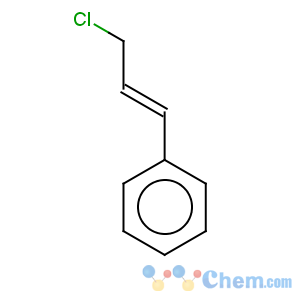guanidine
-
- Product Nameguanidine
- CAS No.2687-12-9
- Purity97%
- Min Quantity
- Price~

 View Contact Detail
View Contact Detail
-
 Molecular Structure
Molecular Structure
Detailed Description
English name: Cinnamyl chlorideOther names: 3-chloro-1-phenylpropene; chlorinated cinnamyl; chlorinated cinnamene; 3-phenylallyl chloride; 3-chloro-1-phenyl-1-propene; cinnamyl chloride; Chloro-1-phenyl-2-propene; cinnamyl chloride.
CAS No.:2687-12-9
Molecular formula: C9H9Cl
Molecular weight: 152.66
Molar mass: 152.621
Boiling point: 108 °C12 mm Hg(lit.)
Flash point: 79.4±0.0 °C
Refractive index: n20/D: 1.584 (lit.)
Properties: Colorless to pale yellow liquid
Purity: >97%
Packaging: 200kg / plastic bucket
Storage method: Store in cool place. Keep container tightly closed in a dry and well-ventilated place. Containers which are opened must be carefully resealed and kept upright to prevent leakage. Recommended storage temperature: 2 - 8°C
Usage:
Used in fine chemicals and organic synthesis. It is commonly used in the synthesis of cardiovascular and cerebrovascular drugs, such as brain azine, cinnamylpiperazine and so on. It is also one of the important spices. it is used to produce other chemicals. For example, it can react with Acetoacetic acid ethyl ester to get 2-trans-Cinnamyl-acetoacetic acid ethyl ester. The reaction occurs with reagents potassium carbonate, acetone.
It was also used in the enantioselective total synthesis of helioporins C and E, bioactive marine diterpenes.